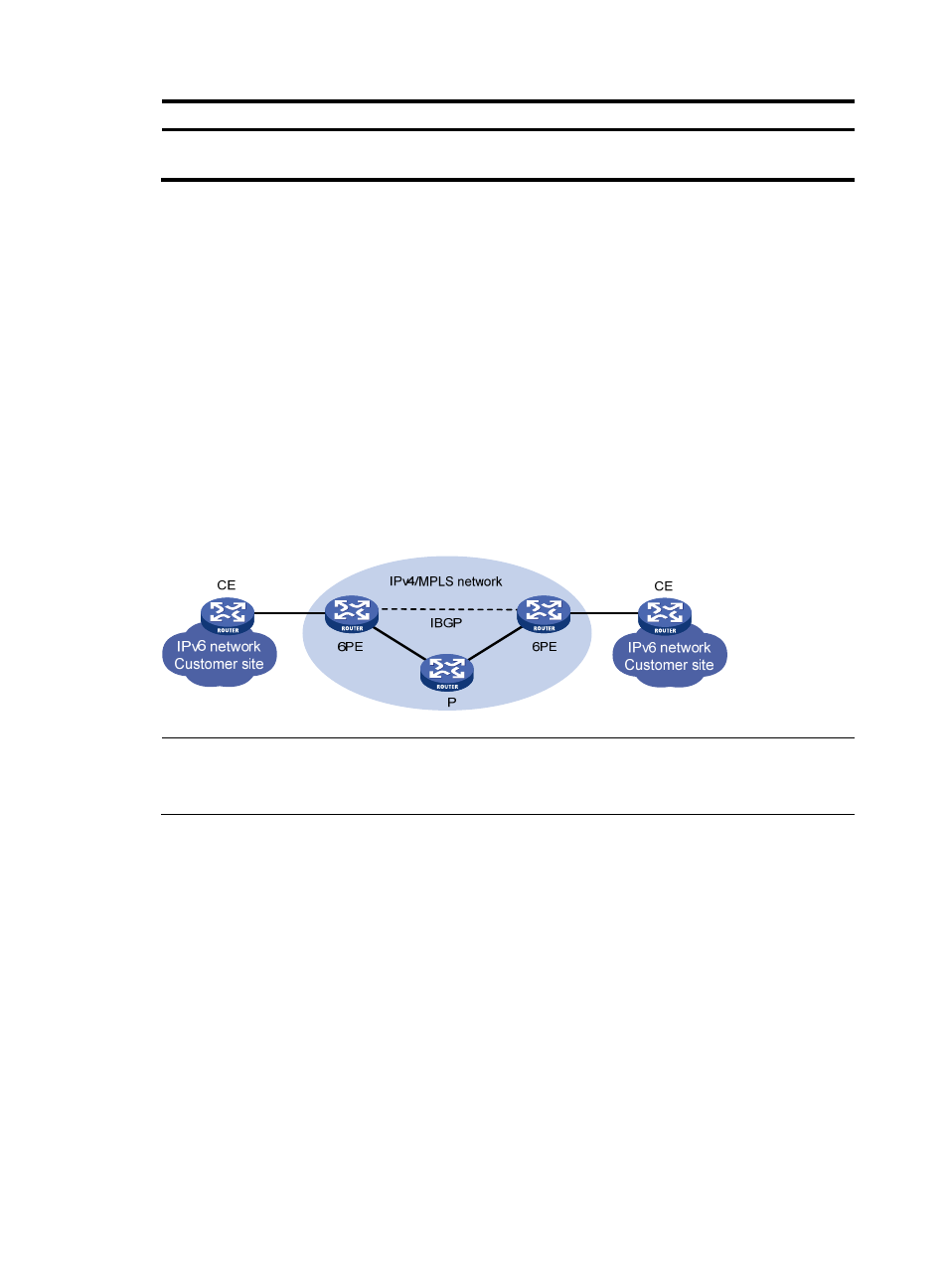Configuring 6pe, Configuration prerequisites – H3C Technologies H3C S12500 Series Switches User Manual
Page 391

375
Step Command
Remarks
6.
Configure the cluster ID of the
route reflector.
reflector cluster-id cluster-id
By default, a route reflector uses its
router ID as the cluster ID.
Configuring 6PE
IPv6 provider edge (6PE) is a transition technology with which Internet service providers (ISPs) can use
existing IPv4 backbone networks to provide access capability for sparsely populated IPv6 networks,
allowing customer edge (CE) routers in these isolated IPv6 networks to communicate with IPv4 PE routers.
Work mechanism of 6PE:
IPv6 routing information from users is converted into IPv6 routing information with labels and then
flooded into IPv4 backbone networks of ISPs through BGP sessions. When IPv6 packets are forwarded,
they are labeled when entering tunnels of backbone networks. The tunnels can be GRE tunnels or MPLS
LSPs.
IGPs running on ISP networks can be OSPF or IS-IS. IPv6 static routing, IPv6 IGP, or IPv6 EBGP can be
used between CE and 6PE.
Figure 117 Network diagram
NOTE:
The P (Provider) router in the above figure refers to a backbone router in the network of a service provider.
P is not directly connected with a CE, and is required to have the basic MPLS capability.
When an ISP wants to utilize the existing IPv4/MPLS network to provide IPv6 traffic switching capability,
only the PE routers must be upgraded. Therefore, it is a highly efficient solution. Furthermore, the
operation risk of the 6PE technology is very low.
Configuration prerequisites
Before you configure 6PE, complete the following tasks:
•
Configure the MPLS basic capability for the IPv4 MPLS backbone. For more information, see MPLS
Configuration Guide.
•
Configure the IPv6 BGP peer on the PE devices. For more information, see "Configuring BGP."
•
If a peer group is to be specified, create the peer group beforehand in BGP view.